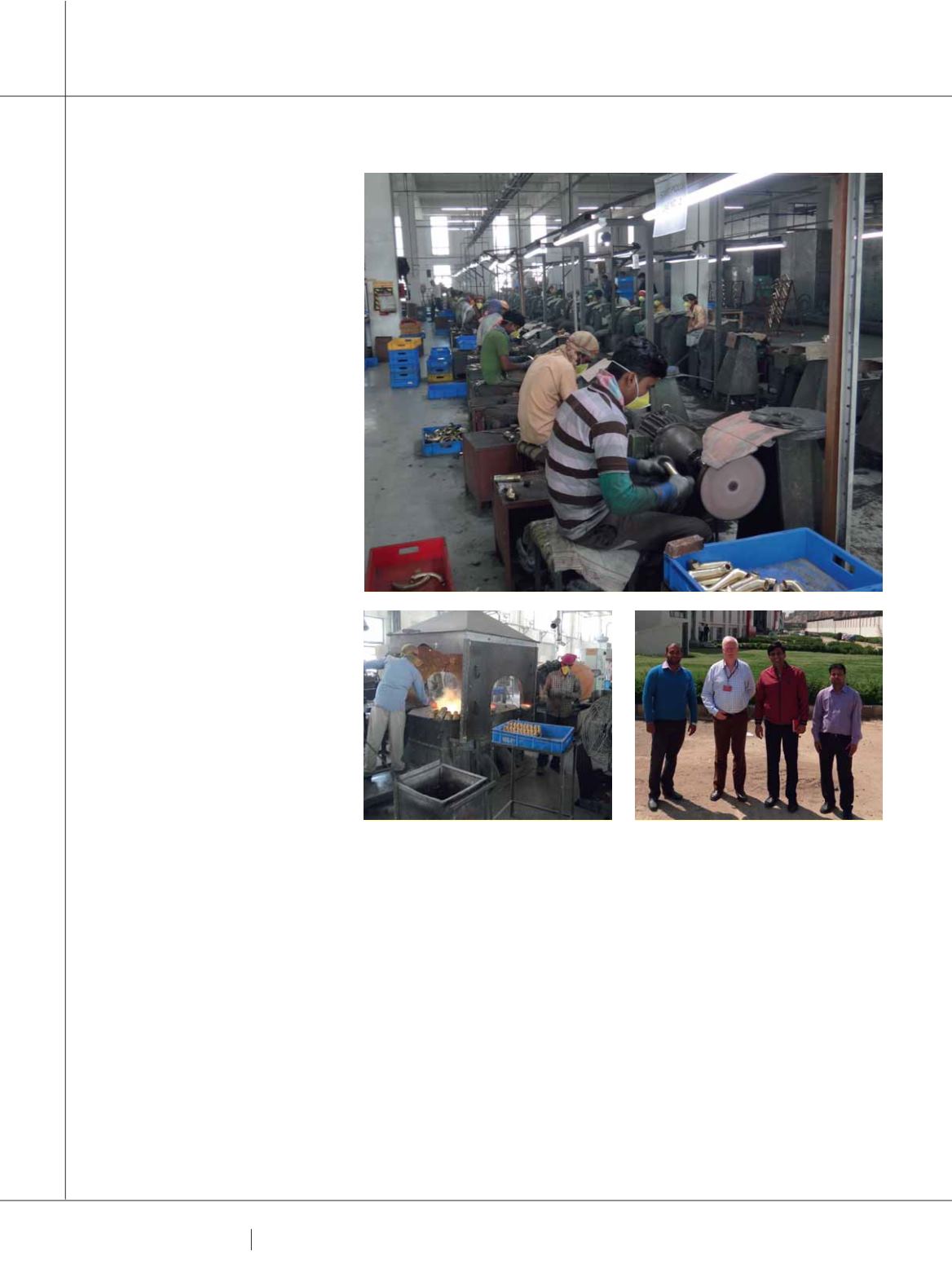

9 0
PLUMBING CONNECTION
WINTER 2015
school. Coming from the Australian
environment of OHS madness, the
conditions in the factory can be
confronting but the company is
gradually improving the life of the
worker. Changing the worker culture
to readily accept wearing safety gear
is as much the issue as anything. The
Indian Cricket team may have to wear
fluorescent safety vests before you’ll
see them popular in this part of the
world.
India is a low-cost producer and
with an average worker salary in this
Hindware plant of ~$2,500 a year, there
is no rush to automate tasks that are
better handled with a skilled potters
care and understanding. However, with
the size of production runs growing,
the company will in the future consider
more modern casting facilities and
robotics. The challenge for business
in these older parts of the city is the
erratic power supply which can go
offline 8-10 times a day. Thus, triple
backup of generators is necessary.
My hosts, the plant CEO and
managers were most hospitable on the
day and very proud of their company
and its achievements.
The next day I took a similar ride
into the suburbs in another direction
to visit the Hindware tapware facility
at Bhiwadi. Hindware has been making
taps for many years but are looking
to significantly grow the business
towards 10 million units in coming
years. This was a new green-field site in
a commercial zone that has improved
infrastructure – gas, electricity and
water, though there is still some-way to
go with roads. The tapware plant is only
partly built out at this stage. Current
production is running on one floor but
there are plans to expand to three other
floors as the market grows.
Well aware that it needs modern
environmental practices, the new
India is building such plants to ensure
it maintains a healthy position with
global competitors.
The management team was highly
educated and use modern western
techniques to continuously improve
quality and output. Though a western
visitor might think the factory looks
only partly finished, the culture of
India is to get in and start producing as
that will create employment. There’s
no need to wait for the niceties.
Because of the access to relatively
low-cost labour, the one thing you
do notice is the lack of materials
handling equipment. There are plenty
of available arms and hands and
there’s no danger of a fork lift running
employees down from behind!
In talking later with Rajendra
Somany, I got the idea that Indian
business was confidently moving
forward under their business-centric
Prime Minister Modi’s agenda.
Hindware has plans afoot to take its
brand to global customers, including
this region. Some Hindware product
was sold in Australia a number of years
back under an import arrangement,
PLUMBING ABROAD
TOP:
Hand polishing is labour intensive, no matter where in the world tapware
is manufactured.
LEFT:
In the foundry, molten brass is ladled out and poured
into ingots.
RIGHT:
L to R:
Mr. Rakesh Yadav-Assistant Manager, Industrial
Engineering; Jeff Patchell; Mr. Ajay Jain- Vice President, Administration; Mr.
Narendra Kumar Gautam-Deputy Manager, Quality Assurance.
















